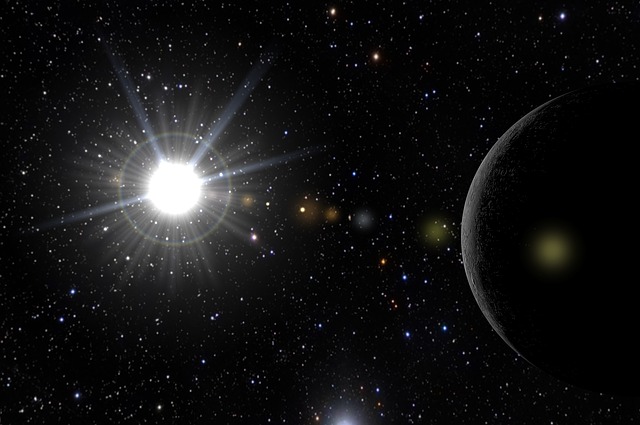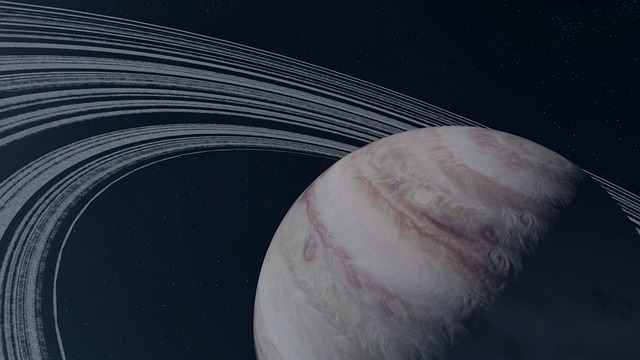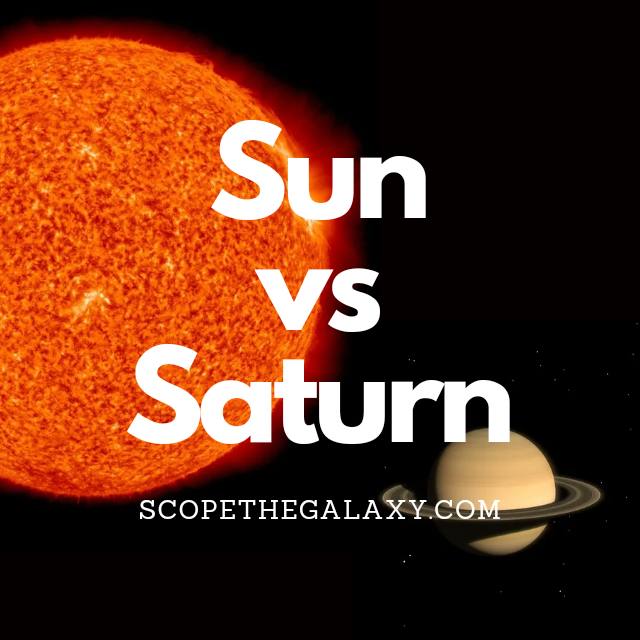*This post may contain affiliate links. This means we may make a commission if you purchase an item using one of our links*
The main differences between the Sun and Saturn is that the Sun is the hot and bright main sequence star at the center of our galaxy whilst Saturn is a yellow gas giant that is the 6th farthest planet from the Sun, around 12 times smaller and is much colder, with an average temperature at a chilling -134°C as opposed the Sun’s 6,000°C.
For a more thorough look at both the Sun and Saturn along with all the ways that they differ, continue reading.
What Is The Sun?
Table of Contents

The Sun is the bright, celestial entity at the centre of our solar system and is also a star that falls under the G type main sequence star bracket (also called a yellow dwarfs), all of which are medium sized stars that tend to be around 0.84 – 1.15 solar masses.
Our Sun is 1 solar mass, making it a medium sized medium star. It’s also on the brighter side for a yellow dwarf, the color that it emits is white as opposed to the slightly yellow that less luminous yellow dwarfs would be.
Of course we still see the Sun as yellow or even red on Earth but, the reason for this significant color shift is because our atmosphere scatters and breaks up the photons that reach us, ultimately changing the true color of the light rays from white to the yellow, orange or red we see in our day to day.
As it is a star, the Sun will actively convert the hydrogen elements at its core into helium, through a process called nuclear fusion.
Nuclear fusion is the reason why it generates light and produces the energy we receive, helping us power machinery, technology, grow crops so on and so forth.
The process of nuclear fusion also affects how hot our star burns, allowing the sun to hit temperatures around 6000°C on a daily basis. This will be the case for another 4.5 – 5 billion years until it’s unable to convert hydrogen into helium.
Once hydrogen cannot be converted, an imbalance between the inward and outward forces keeping the Sun together will occur, causing an imbalance which would result in our Sun bloating up many many times its current size.
When this happens it will enter its red giant phase, where it’ll be around 256 times larger than it is now.
This phase will last for around a billion years until it sheds it mass through a process called planetary nebula, leaving behind only a dead white dwarf remnant.
What Is The Planet Saturn?

Saturn is the second largest planet in our solar system, surrounded by a multitude of rings around its gaseous exterior. It’s also the 6th farthest planet from the Sun.
As a gas giant Saturn will be made up mostly of gases, but their composition is a mixture of hydrogen and ices containing elements of Ammonia.
It’s core on the other hand is comprised of a dense core of nickel and iron, which is then surrounded by rocks compressed so strongly together that it can achieve scorching temperatures of upto 11,700 degrees Celsius.
It’s gaseous atmosphere is far cooler, reaching extreme sub zero temperatures of -138 degrees Celsius. Now this is generally constant throughout the yellow ringed giant and much colder than even the coldest place on Earth, which would be Eastern Antarctic Plateau, Antarctica that hits -94 degrees Celsius, more than 40 degrees Celsius warmer.
Being so large, Saturn’s gravitational pull is quite strong, therefore over it’s 4.5 billion years of existence, beyond its rings this yellow gas giant has managed to accumulate 82 different moons that now orbit it.
In fact it’s largest moon titan is literally bigger than Mercury in size.
Saturn also orbits the Sun but, being the 6th Farthest planet from it, it does mean a singular orbit will take 29.4 Earth years to complete. In comparison to its axial orbit which only takes 10.7 hours, this is an extremely long orbital cycle.
Similarities Between The Sun And Saturn
Both entities have a few similarities but, it’s far from the extent that Jupiter is similar to the Sun.
One major similarity is that Saturn is made mostly of gases with hydrogen acting as one of its primary elements. Both entities are over 4.5 billion years and big enough to have multiple other celestial bodies orbiting them.
Differences Between The Sun And Saturn
As for the differences between Saturn and the Sun, they include the following:
- The Sun is made up mostly of hydrogen and helium, whereas Saturn mostly consists of hydrogen and ices containing ammonia
- The Sun is far hotter than Saturn where its base temperature is 6,000°C. Saturn on the hand has a base temperature of around -134°C.
- Saturn orbits the Sun whilst the Sun does not orbit any other celestial object.
- The Sun has a stronger magnetic field than Saturn
- The Sun has a stronger gravitational field than the Sun
- Saturn is so much smaller than the Sun that you could literally fit 1,600 planets its size inside it. Saturn’s diameter is 116,460km whereas, the Sun has a diameter of 1.3927 million kilometers.
- Saturn is estimated to be 4.5 billion years old whilst the Sun is roughly 4.6 billion years old.
- The Sun is able to create it’s own light source through nuclear fusion whilst Saturn mostly uses the Sun to maintain its resources.
- The Sun will eventually die and become a white dwarf in roughly 10 billion years whilst Saturn doesn’t have a phase where they will die.
- Saturn has 7 rings orbiting it.
Summary
In regards to composition, size heat and overall power of each celestial body, they aren’t that comparable.
The Sun is in the center of our solar system and is the body that everything within our solar system orbits and is essentially the reason why life is able to exist as it is today. Saturn on the other hand is the second biggest planet in the solar system which is most commonly recognised by its yellow exterior and visible rings.

